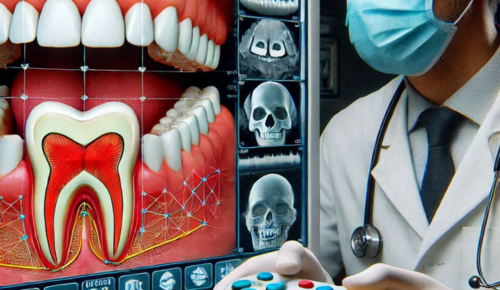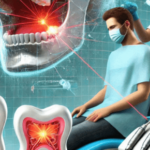As a trusted dentist in Memorial City, West Houston, our team has witnessed the impact that trauma can have on oral health. One often-overlooked consequence of trauma is the development of dental anomalies, which can affect the shape, size, and alignment of teeth. Dental anomalies can be more than just a cosmetic issue – they can also lead to functional problems, increased risk of dental decay and gum disease, and reduced self-confidence.
In this article, we’ll explore the complex relationship between trauma and dental anomalies, and discuss how our team can help patients achieve a healthier, more beautiful smile.
What Are The Types of Trauma That Contribute to Dental Anomalies?
Trauma can take many forms, and several types of trauma have been implicated in the development of dental anomalies. These include:
- Physical trauma: Physical trauma, such as a blow to the mouth or face, can damage the developing teeth and surrounding tissues, leading to anomalies such as tooth displacement, fracture, or agenesis.
- Emotional trauma: Emotional trauma, such as stress or anxiety, can also affect tooth development. Research suggests that chronic stress can disrupt the normal development of teeth, leading to anomalies such as enamel hypoplasia or tooth agenesis.
- Iatrogenic trauma: Iatrogenic trauma, such as that caused by dental procedures or orthodontic treatment, can also contribute to the development of dental anomalies.
What Are The Mechanisms by Which Trauma Affects Tooth Development?
Trauma can affect tooth development through several mechanisms, including:
Disruption of Tooth Germ Development
- Tooth bud damage: Trauma can damage the tooth bud, leading to abnormal tooth development or tooth agenesis.
- Disruption of tooth morphodifferentiation: Trauma can disrupt the normal process of tooth morphodifferentiation, leading to abnormalities in tooth shape and size.
Alteration of Enamel and Dentin Formation
- Enamel hypoplasia: Trauma can cause enamel hypoplasia, a condition characterized by a deficiency in enamel formation.
- Dentin dysplasia: Trauma can also cause dentin dysplasia, a condition characterized by abnormal dentin formation.
Inflammation and Scarring
- Inflammatory response: Trauma can trigger an inflammatory response, leading to the production of pro-inflammatory cytokines that can disrupt tooth development.
- Scarring and fibrosis: Trauma can also cause scarring and fibrosis in the surrounding tissues, leading to abnormalities in tooth development and eruption.
Neurological and Hormonal Changes
- Neurological changes: Trauma can cause neurological changes that can affect tooth development, including changes in nerve growth and differentiation.
- Hormonal changes: Trauma can also cause hormonal changes that can affect tooth development, including changes in the production of hormones that regulate tooth development.
Genetic and Epigenetic Changes
- Genetic changes: Trauma can cause genetic changes that can affect tooth development, including mutations in genes that regulate tooth development.
- Epigenetic changes: Trauma can also cause epigenetic changes that can affect tooth development, including changes in gene expression and DNA methylation.
What Are The Clinical Implications of Trauma-Induced Dental Anomalies?
Trauma-induced dental anomalies can have significant clinical implications, including:
- Aesthetic concerns: Dental anomalies can affect the appearance of the teeth and smile, leading to aesthetic concerns and reduced self-esteem.
- Functional problems: Dental anomalies can also affect the function of the teeth and mouth, leading to problems with biting, chewing, and speaking.
- Increased risk of dental problems: Trauma-induced dental anomalies can increase the risk of dental problems such as tooth decay, gum disease, and tooth loss.
Bottom Line
Trauma plays a significant role in the development of dental anomalies, and understanding the relationship between trauma and dental anomalies is essential for prevention and treatment. By recognizing the types of trauma that contribute to dental anomalies, the mechanisms by which trauma affects tooth development, and the clinical implications of trauma-induced dental anomalies, healthcare professionals can provide comprehensive care and improve outcomes for patients with trauma-induced dental anomalies.



